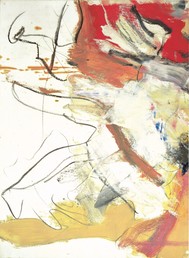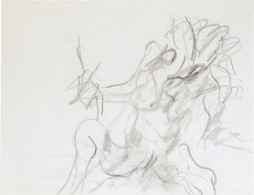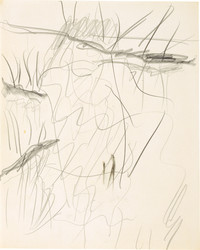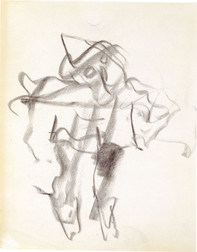Willem de Kooning
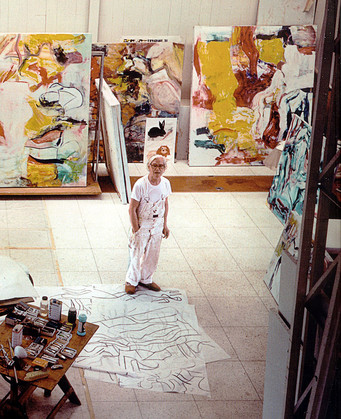
Biography
Willem de Kooning was a Dutch-American Abstract Expressionist painter and a leading figure within the so-called New York group of American modernists, which included Jackson Pollock, Barnett Newman and Mark Rothko. His early work was made under the influence of Arshile Gorky, who was a personal friend, and works such as Picasso’s Guernica. For his first solo exhibition in 1948, De Kooning showed a remarkable series of energetic large-scale canvases in black and white household paint that fused elements of European Cubism and Surrealism with a distinctly American sensibility. De Kooning developed into a sublime colourist, as demonstrated in his iconic series of paintings from the 1950s entitled Woman, which hover between portraiture and abstraction. In the 1960s, in response to his move to the countryside in East Hampton, he painted a series of paintings based on the North Atlantic light, and also began sculpting figures modelled in clay that he cast in bronze. De Kooning continued to paint until well into his eighties. His late paintings have a fragility and sparseness to them; despite their controversial reception at the time, they are today considered to be amongst his finest works.
Willem de Kooning was born in 1904 in Rotterdam and emigrated to America aged twenty-two. He died in 1997 in East Hampton, New York. Willem de Kooning was recently the subject of a major retrospective at The Museum of Modern Art, New York (2011-12).
Selected Images
Exhibitions
Publications

Willem de Kooning
Works on Paper
essay by Robert Pincus-Witten, published by Xavier Hufkens, 2008, 32 pages, English
Sold out
